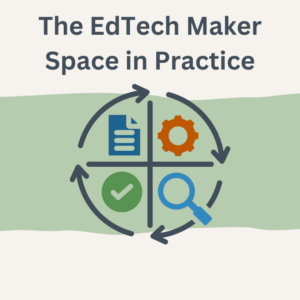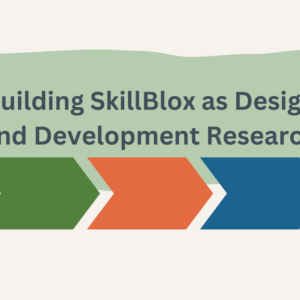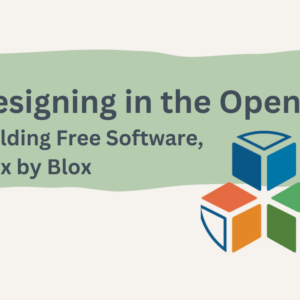By 21CLEO Research Team
As education researchers and practitioners, we’ve long been committed to furthering adult education as a way to build toward a more just and equitable society. We believe that although education often is seen as a portal to success, it is not an individual journey of perseverance. It is a series of doors, open for some and shut for others. We know that the world we envision of equality and justice and opportunity is not yet the world we live in.
The effects of the pandemic have disproportionately affected women and those who are Black, Indigenous, and People of Color, and it is those groups who make up a significant number of frontline service workers. The ongoing Black Lives Matter protests in response to police violence against Black, Indigenous, and People of Color has raised public awareness of the inequities that have long plagued society. And we continually face additional pandemics of violence and hate crimes for which medicine and science cannot offer a cure. These historical reckonings affect our lives, workplaces, and employer-supported learning opportunities.
The 21 CLEO research project has widened our perspective to include social and racial injustice in our ongoing examination of learning opportunities for frontline service workers. Our project examines the ecosystem of employer-supported learning opportunities. We are examining how they’re offered, who they’re offered to, and the difference they may make in the lives of frontline service workers. The direction we’ve taken aims to describe learning ecosystems, and, since summer of 2020, to examine the racist underpinnings for a system upon which those ecosystems are built. We also are led to ask how the system may need to change in order for learners to have relevant and accessible educational opportunities with the potential to change their lives.
Over the last two years we’ve listened closely and carefully to the experiences of working learners across the US within the service, retail, hospitality, and healthcare sectors. We’ve learned about how education providers set goals to meet their learners’ needs. We’ve developed an empirical process leading to our development of personas intended to enrich understandings of who working learners are.
To be true to today’s realities, we’ve turned to Critical Race Theory as a way to reveal the under-the-surface tensions that shape employer-supported learning opportunities (See the list of key publications that have informed our work at the end of this post). Critical Race Theory is a well-established body of work in law and education. It is not a fringe theory nor does it live in the ivory towers. When we center learners within a learning ecosystem and use Critical Race Theory, we move beyond simple narratives and reveal many layered identities of working learners. We are able to see that individuals bring a great deal of experience and knowledge to the learning opportunity and to their employment, no matter what language they speak, where they come from, and what work they do.
Race and opportunity, violence, and politics are shaping and are shaped by today’s realities. Additionally, by centering race, we also become attuned to other areas of inequities such as gender, ethnicity, social class, and language discrimination and what it means when different identity markers intersect. Our work in this area is part of a larger trend, most visible in the work of influencers such as film producer Ana DuVernay, and her groundbreaking film 13th, as well as historians such as Ibram X. Kende and his books Stamped from the Beginning and How to Be an Anti-racist.
Collectively, professional organizations, educational institutions, and special interest groups have taken notice and are taking a stand for racial justice and equity, diversity, inclusion, and anti-racist social movements. These efforts are highly visible in the mainstream media, social media, in the physical environments and in many communities and neighborhoods.
It is important to note that Critical Race Theory is not a pedagogy, even though it has been linked with diversity training in workplaces. Although some on the political right have called Critical Race Theory authoritarian, divisive, and guilty of fomenting “cancel culture,” what Critical Race Theory does is illuminate how oppression is systemic and structural and how structural transformation that addresses oppression will benefit all people.
 As four white, female academics and educators using the tools of research to focus attention on working learner voices and to describe the push and pulls within the ecosystems of employer-supported learning opportunities, we have found that Critical Race Theory has been an essential tool. The importance of anti-racist thinking is exemplified for white people. It is essential to be involved, to be a voice, to be allies. Just as a crystal breaks apart what appears to be a single beam of light, using Critical Race Theory along with other theoretical lenses for understanding our data allows us to see multiple perspectives and examine and interpret a wider system.
As four white, female academics and educators using the tools of research to focus attention on working learner voices and to describe the push and pulls within the ecosystems of employer-supported learning opportunities, we have found that Critical Race Theory has been an essential tool. The importance of anti-racist thinking is exemplified for white people. It is essential to be involved, to be a voice, to be allies. Just as a crystal breaks apart what appears to be a single beam of light, using Critical Race Theory along with other theoretical lenses for understanding our data allows us to see multiple perspectives and examine and interpret a wider system.
This work is not simple. It’s challenging, upsetting, and unsettling at times. It involves looking, not just seeing. It is a process that reveals pain.
Listening to the experiences of educational providers, we have been able to see how they struggle to meet the needs of working learners within a system that has racism built in.
By thinking about racism and all social justice work as a systemic issue rather than a set of individual actions, we are led to question the underlying structures that may be undermining working learners’ success despite the best efforts of all involved. Adopting the lens of CRT in our work is meant to provoke change and prompt healing. It has caused us to question our role as researchers and our place as educators in the social justice movement. It has challenged us to move out of the safety of academia and to think of our research as social action.
The work we’ve described in this post is part of the wider struggle that is research. And like all good research, we leave with more questions rather than definitive results or recommendations. We’re at the beginning of this work, so we don’t have the answers to these questions, but we will use them to continue our efforts to contribute to a more just and equitable world.
Listen as we talk about our work.
Critical Race Theory literature that has informed our work.
Bell Jr, D. A. (1980). “Brown V. Board of Education and the Interest-Convergence Dilemma.” Harvard Law Review 93(3): 518–533.
Closson, R. B. (2010). Critical race theory and adult education. Adult Education Quarterly, 60(3), 261-283.
Crenshaw, K. (1991). Mapping the Margins: Intersectionality, Identity Politics, and Violence against Women of Color. Stanford Law Review, 43(6), 1241-1299.
Delgado, R. & Stefancic, J. (2001/2012). Critical Race Theory: An Introduction. Critical America (2nd ed.). New York University Press.
Dixson, A. D., Rousseau, C. K., & Donnor, J. K. (2006). Critical race theory in education: All God’s children got a song. Routledge. https://doi.org/10.4324/9781315870557
Ladson-Billings, G., & Tate, W. (1995). Toward a critical race theory of education. Teachers College Record, 97(1), 47–68
Solórzano, D. G. (1997). Images and words that wound: Critical race theory, racial stereotyping, and teacher education. Teacher Education Quarterly, 24, 5-19.
Solórzano, D. G., & Yosso, T. J. (2002). Critical Race Methodology: Counter-Storytelling as an Analytical Framework for Education Research. Qualitative Inquiry, 8(1), 23–44. https://doi.org/10.1177/107780040200800103




